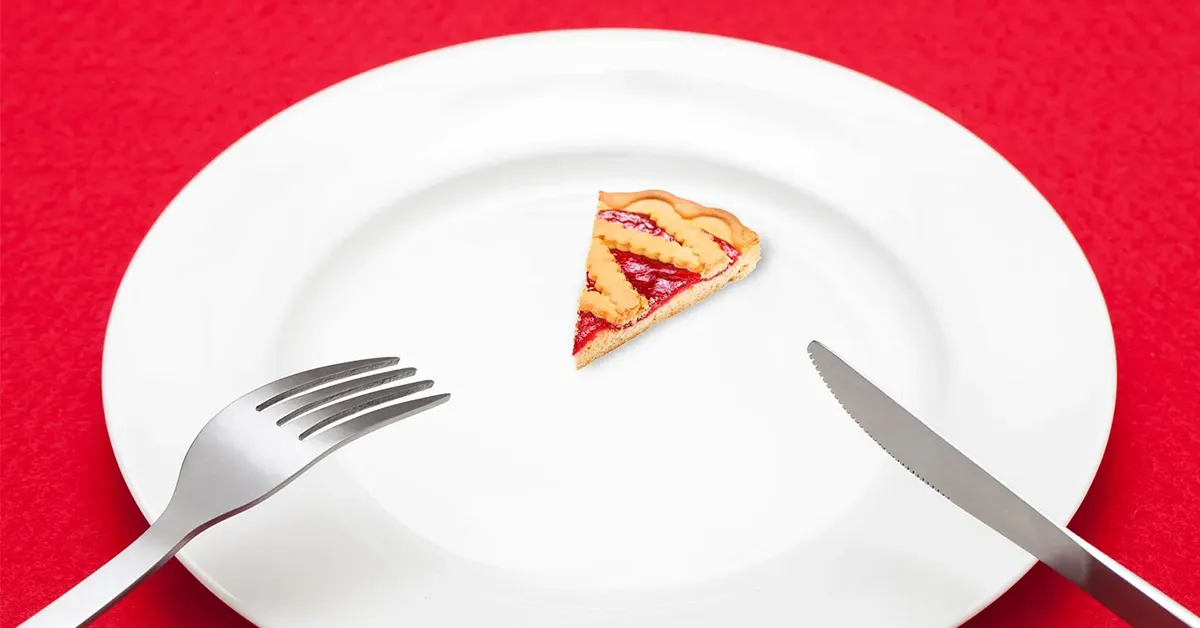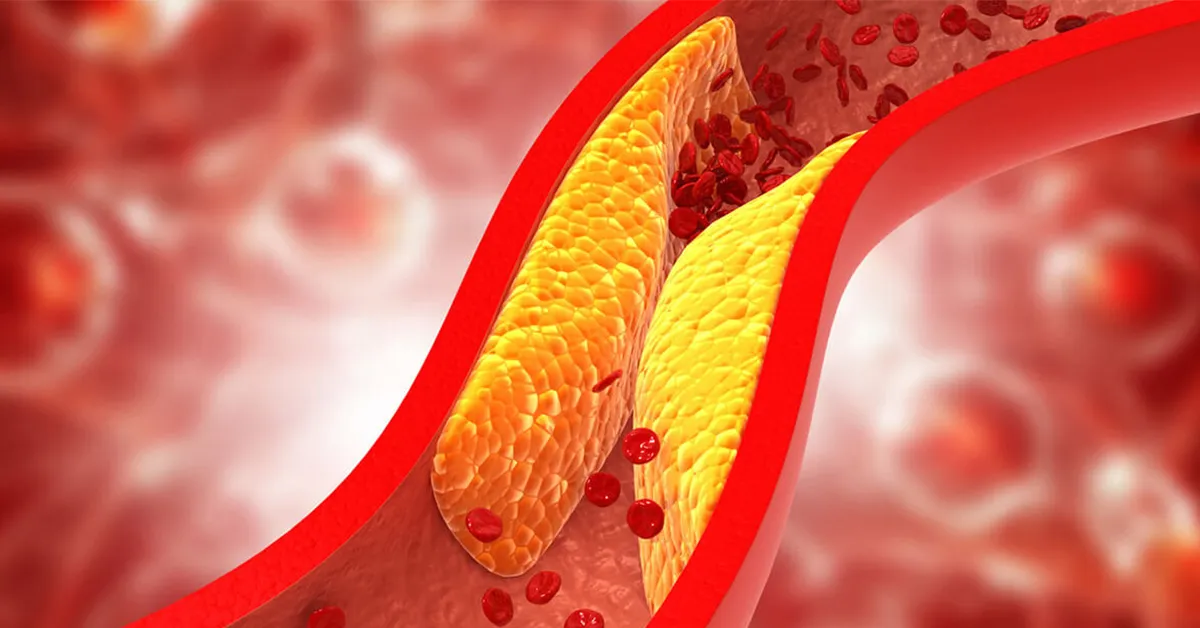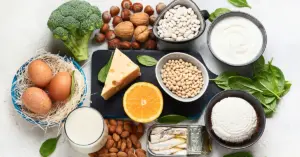4 Elements of a Healthy Lifestyle Program: Eat less, Lower blood lipids, Lose weight, and Muscle training.
1. Eat less: The wisdom of controlling calorie intake
Scientific basis:
– A study on the “80% full” culture in Okinawa, Japan, showed that reducing calorie intake by 20% can extend life by 10-15 years (Cell Journal).
– Harvard Medical School experiments confirm that intermittent fasting can enhance cell autophagy and reduce the risk of diabetes.
– Intermittent Fasting Studies: Multiple studies have shown that intermittent fasting (such as the 16:8 method or the 5:2 diet) is an effective way to reduce calorie intake, promote weight loss, improve blood sugar control, and reduce inflammatory responses.
– CALERIE was a two-year randomized controlled trial that studied the effects of moderate caloric restriction on human health. The results showed that caloric restriction can improve multiple metabolic markers, such as insulin sensitivity, blood pressure, and cholesterol levels.
Practice plan:
– Plate rule: 1/2 vegetables, 1/4 high-quality protein, and 1/4 whole grains.
– 20-minute eating method: chew each mouthful 20 times to give satiety signals time to pass.
– Alternative strategy: Replace white plates with blue plates (a color associated with appetite suppression).
– Intermittent Fasting Studies: Multiple studies have shown that intermittent fasting (such as the 16:8 method or the 5:2 diet) is an effective way to reduce calorie intake, promote weight loss, improve blood sugar control, and reduce inflammatory responses.
– Use small tableware: Psychological studies have shown that using smaller bowls and plates will naturally make people eat less.
– Drink warm water or light soup before meals: Drinking a glass of warm water or a bowl of vegetable soup before meals can produce a certain sense of fullness in advance and help reduce the intake of the main meal.
– Reasonably match ingredients to improve satiety: Eat more high-fiber foods (such as vegetables, beans, whole grains), high-quality protein (such as eggs, chicken breast, tofu), and a small amount of low-GI carbohydrates (such as konjac rice, oats, sweet potatoes, quinoa), which can not only satisfy the taste buds, but also prolong the time of fullness.
– Eat regularly and avoid overeating: Have fixed meal times and avoid eating too much at one time due to hunger. You can add snacks such as nuts, yogurt, and fruits to prevent uncontrolled eating due to excessive hunger.
Practical tips for controlling calorie intake:
| Project | Suggestion |
| Main course selection | Replace some white rice with konjac noodles, quinoa, or brown rice |
| Protein sources | Mainly eggs, fish, shrimp, lean meat, and soy products |
| Fat Control | Cook with less oil, and give priority to olive oil and rapeseed oil |
| Cooking method | Steaming, boiling and stewing are better than frying and stir-frying |
| Eating habits | Eat slowly, eat at regular times and in regular amounts, and avoid late-night eat |
– The British Medical Journal recorded that residents of an Italian town who practiced the “five small meals” model had a 37% decrease in cardiovascular disease incidence.
– A mouse experiment conducted by the Max Planck Institute in Germany found that mice that were fed a restricted diet from an early age lived longer and were in better health. However, if they were switched to a free diet in old age, the mortality rate rose rapidly, indicating that long-term persistence is required.
– Alternate-day fasting improves cognition (Gut journal study): 96 obese people underwent a three-month dietary intervention, consuming 25% of their calories on fasting days. Cognitive improvement was the most significant and compliance was the best.

2. Lower blood lipids: the secret to younger blood vessels
Key data:
– For every 1 mmol/L reduction in LDL-C (bad cholesterol), the risk of coronary heart disease decreased by 21% (Lancet Meta analysis).
– If LDL-C is excessive (>2.6mmol/L) at a young age, even if it is controlled to normal after middle age, the risk of cardiovascular events at the age of 55 is still 3 times higher than that of the normal population (35-year follow-up study in the United States).
– For every 1% increase in cholesterol, the incidence of coronary heart disease increases by 2% to 3%.
– If trans fatty acid intake is >2g/day, the risk of heart disease increases by 23%.
– When triglycerides (TG) are >2.3mmol/L, the risk of atherosclerosis increases significantly. If accompanied by low HDL-C (good cholesterol), the risk of cardiovascular events doubles.
– TG>1.7mmol/L + HDL-C<1.0mmol/L, the risk of metabolic syndrome increases by 4 times.
Execution strategy:
– Quit smoking and drinking: After quitting smoking for one year, HDL can rise by 10%~15%. Men should drink less than 25g of alcohol per day (about 250 ml of red wine), and women should drink less than 15g.
– Sleep and stress management: Make sure to fall asleep before 11 pm and have a deep sleep of ≥1.5 hours (to avoid elevated cortisol and fat synthesis). Do 10 minutes of mindfulness meditation every day (to reduce stress-induced blood lipid fluctuations).
– Kitchen Revolution: Use grapeseed oil (high smoke point) instead of peanut oil, and use flaxseed oil for salads.
– Superfood list: 1 handful of almonds (containing plant sterols) and 3 servings of oat beta-glucan per day.
– Testing frequency: Quarterly after age 30 with a home lipid profile monitor, focusing on non-fasting triglycerides.
Frequency of lipid testing:
| Crowd | Detection frequency | Key indicators to watch |
| Healthy adults | Once a year | LDL-C, TG/HDL-C ratio |
| High-risk groups | Every 3-6 months | LDL-C (target <1.8mmol/L) |
| Medication | Initially monthly, quarterly after stabilization | Liver function + creatine kinase |
Typical cases:
– Finland’s North Karelia project promoted a low-fat diet through national policies (reducing the intake of butter and whole milk, and increasing the intake of vegetables and whole grains). Over the past 30 years, the average cholesterol level of residents has dropped by 38% and the mortality rate from coronary heart disease has dropped by 80%.
– The traditional diet of the “longevity village” in Okinawa, Japan, is mainly sweet potatoes, deep-sea fish, and bitter melon. Saturated fat accounts for only 6% of the total calories (Western diets are usually 12 %+). The residents have the lowest LDL-C levels in the world, and the proportion of centenarians is extremely high.
– 7,500 high-risk people adhered to the Mediterranean diet (extra virgin olive oil + nuts). After 5 years, the volume of atherosclerotic plaques decreased by 2% and the risk of cardiovascular events decreased by 30%.

3. Lose weight: Scientific management of fat
Metabolic truth:
– For every 1kg reduction in visceral fat, insulin sensitivity increases by 30% (Diabetes Care), and the risk of type 2 diabetes is significantly reduced.
– The basal metabolic rate decreases by 1-2% every decade with age, so the intake needs to be adjusted dynamically.
– Even if you succeed in losing weight, fat cells still retain the memory of obesity, and are more efficient in absorbing sugar and fat, making it easy to rebound.
Practical system:
– Smart Monitoring: Use a body fat scale with impedance analysis to focus on changes in the waist-to-hip ratio.
– Drinking water and metabolism: Drink 2000-2500 ml of water every day (small amounts and multiple times), and drink warm water on an empty stomach in the morning to promote metabolism.
The ratio of the three major nutrients:
– Protein (20%-30%): Give priority to chicken breast, fish, shrimp, and beans (about 20-30g per meal).
– Fat (20%-30%): Mainly unsaturated fat (olive oil, nuts, deep-sea fish).
– Carbohydrates (40%-50%): 2/3 should be whole grains, and reduce refined sugar.
Weight and body fat monitoring:
| Index | Frequency | Target |
| Weight | Once a week | Lose 2-4kg per month (no more than 5%) |
| Body fat percentage | Once a month | Males <20%, Females <25% |
| Waist-to-hip ratio (WHR) | Once every 2 weeks | Male <0.9, Female <0.85 |
Transformation sample:
The BBC documentary “Ten Rules for Weight Loss” verifies that keeping a food record can naturally reduce your intake by 15%.

4. Muscle training: the core weapon for anti-aging
Physiological mechanisms:
– For every 1kg of muscle gained, resting metabolic rate increases by 50-70 kcal/day, offsetting age-related metabolic decline (American College of Sports Medicine).
– Type II muscle fibers (explosive power) lose 1.5% each year after the age of 30 and require stimulation by resistance training.
Training system:
– Beginner circuit: 2 days of bodyweight training (plank advanced) + 1 day of elastic band training.
– Compound movements are preferred: Multi-joint movements such as squats, deadlifts, and push-ups are the most efficient.
Empirical research:
Follow-up research from the University of Copenhagen in Denmark shows that people over 70 years old who persist in resistance training can reverse mitochondrial function by 15 years of aging.
Integration Implementation Plan: 21-Day Challenge Plan
| Time | Execution content | Monitoring indicators |
| 7:00 | Drink 300ml warm water on an empty stomach + 10 minutes of morning yoga | Sleep quality score (bracelet data) |
| 12:30 | Rainbow plate + 20-minute meal timer | Postprandial blood sugar (optional) |
| 19:00 | Resistance training (elastic band 3 sets * 15 times) | Muscle soreness index |
| 22:30 | Hot bath + magnesium supplementation | Morning resting heart rate |
Stage goals:
– Week 1: Establish a food logging habit.
– Week 2: Complete 3 15-minute strength training sessions.
– Week 3: Achieve an average of 8,000 steps per day.







